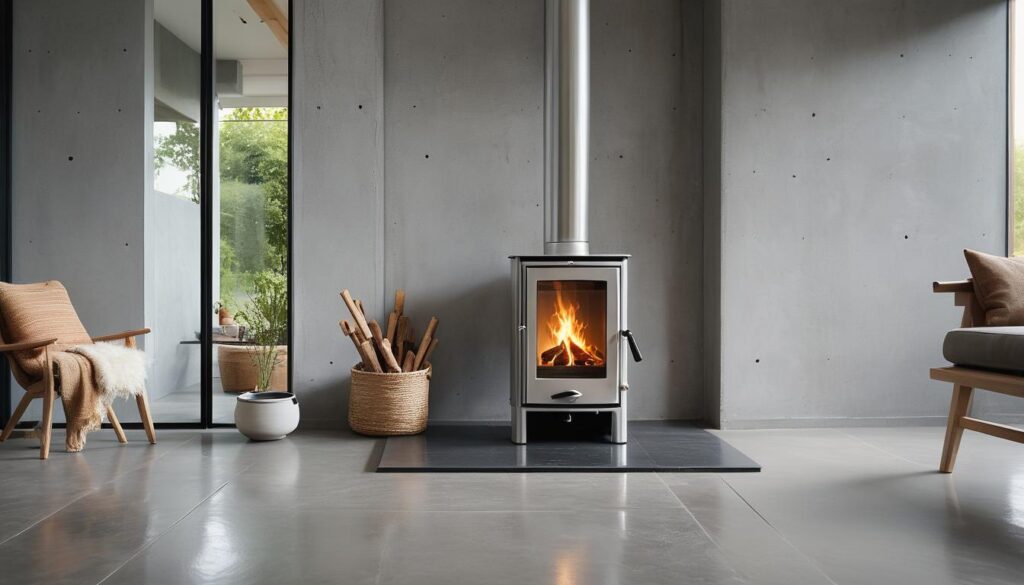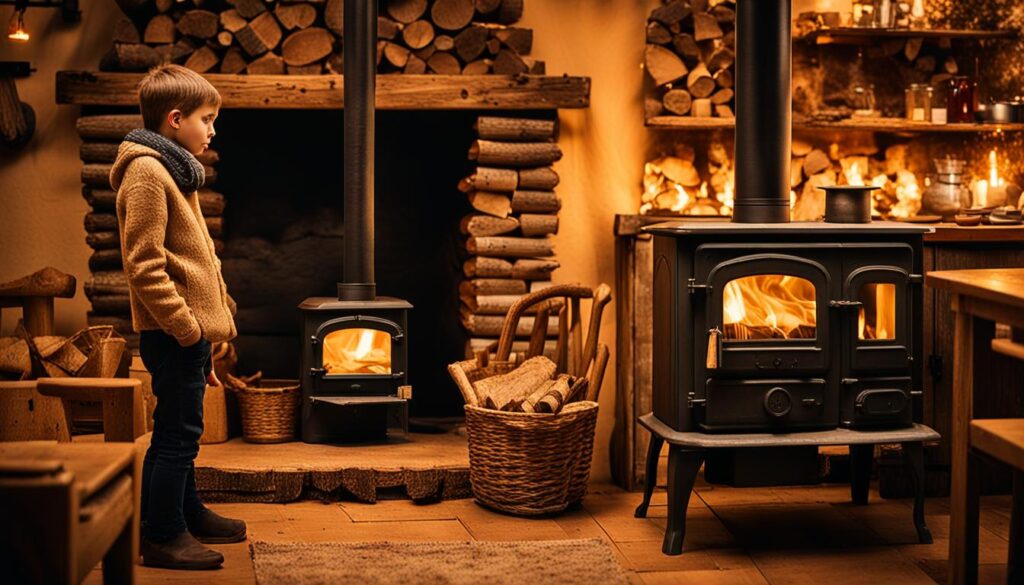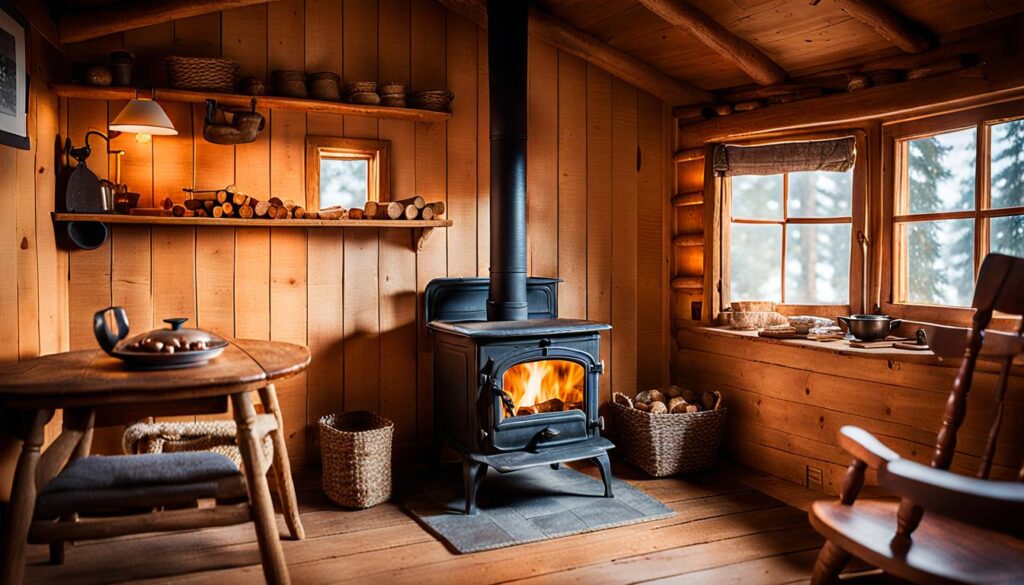
Selecting the right wood stove for your room size is a crucial decision that can significantly impact your home’s comfort, energy efficiency, and overall ambiance. As the crisp autumn air settles in and winter approaches, many homeowners turn to the warmth and charm of wood stoves to create a cozy atmosphere while keeping heating costs in check. This comprehensive guide will help you navigate the process of choosing the ideal wood stove for your space, ensuring optimal performance and satisfaction.
Understanding Wood Stove Sizing
The key to selecting the perfect wood stove lies in matching its heating capacity to your room’s dimensions and characteristics. A stove that’s too small will struggle to heat the space adequately, while an oversized stove may lead to overheating and inefficient operation. To make an informed decision, it’s essential to consider factors such as square footage, ceiling height, insulation quality, and local climate.
Wood Stove Size Categories
Wood stoves are typically classified into four main size categories based on their heating capacity:
| Wood Stove Size | Heating Capacity (sq. ft.) | BTU Output | Ideal Room Type |
|---|---|---|---|
| Small | Up to 500 | 20,000-40,000 BTUs | Small rooms, cabins |
| Medium | 500 – 1,000 | 40,000-70,000 BTUs | Open-concept living areas |
| Large | 1,000 – 2,200 | 70,000-90,000 BTUs | Two-story homes |
| Extra Large | Over 2,200 | Over 90,000 BTUs | Large open spaces |
These categories provide a general guideline, but it’s important to remember that actual heating capacity can vary based on numerous factors specific to your home.
Factors Influencing Wood Stove Performance
When selecting a wood stove, consider the following elements that can affect its heating efficiency:
- Insulation Quality: Well-insulated homes retain heat better, potentially allowing for a smaller stove size.
- Ceiling Height: Rooms with high ceilings require more heating power to maintain comfortable temperatures.
- Window Size and Quantity: Large or numerous windows can lead to increased heat loss, necessitating a more powerful stove.
- Floor Plan: Open concept spaces may require larger stoves compared to homes with divided rooms.
- Climate Zone: Colder regions typically demand higher BTU outputs for adequate heating.
- Desired Temperature: Personal comfort preferences play a role in determining the ideal stove size.
Calculating Your Stove’s Required Output
To determine the minimum kilowatt (kW) output needed for your space, use this simple calculation:
- Measure the room’s length, width, and height in meters.
- Multiply these dimensions to get the room’s volume in cubic meters.
- Divide the result by 14 to estimate the minimum kW output required.
For example, a room measuring 5 x 6 x 2.4 meters (72 cubic meters) would need a stove with a minimum output of 5 kW.
Small Room Example
A cozy bedroom measuring 12 x 15 feet (180 square feet) with standard 8-foot ceilings would typically require a small wood stove with an output of 20,000-30,000 BTUs or 4-6 kW. A compact stove designed for small spaces would be suitable for this room, providing efficient heating without overwhelming the area.
Medium Room Example
For an open-concept living and dining area measuring 20 x 30 feet (600 square feet) with 9-foot ceilings, a medium-sized wood stove outputting 40,000-60,000 BTUs or 7-9 kW would be appropriate. A stove with a larger firebox and longer burn times would effectively heat this space while maintaining a comfortable atmosphere.
Large Room Example
A spacious great room measuring 30 x 40 feet (1,200 square feet) with vaulted 14-foot ceilings would need a large wood stove capable of 60,000-80,000 BTUs or 10-15 kW. A high-capacity stove with advanced combustion technology would be ideal for efficiently heating this larger area while minimizing emissions.
Small Cabin Example
A compact cabin measuring 16 x 20 feet (320 square feet) with 8-foot ceilings would typically require a small wood stove with an output of 30,000-40,000 BTUs or 5-7 kW. This size stove would provide ample heat for the cozy space without overheating it.
Open Concept Home Example
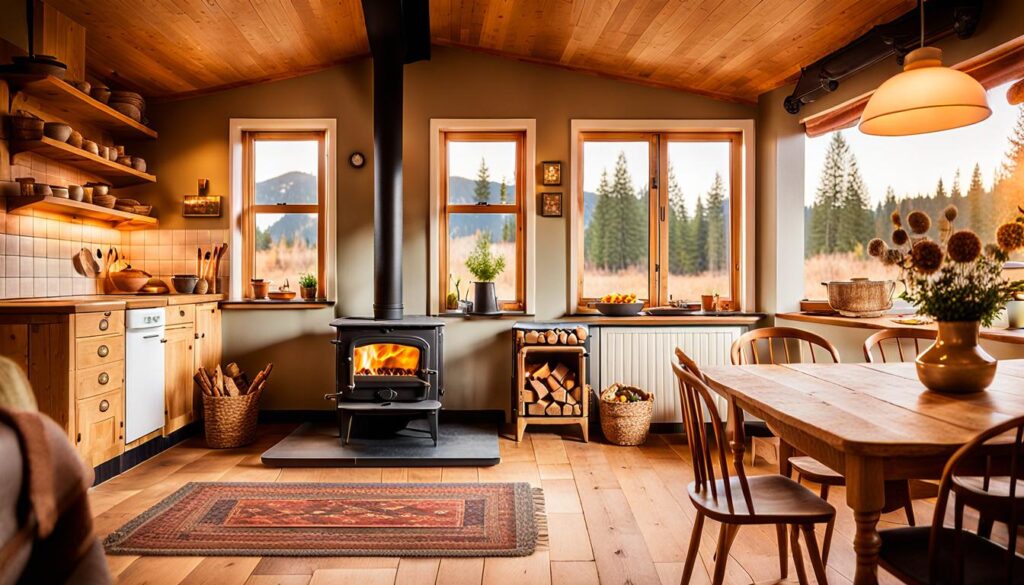
For an open floor plan home with a combined kitchen, dining, and living area measuring 25 x 35 feet (875 square feet) and 10-foot ceilings, a medium to large wood stove outputting 50,000-70,000 BTUs or 8-12 kW would be appropriate. This would effectively heat the larger open space.
Two-Story Home Example
A two-story home with a total of 1,500 square feet of living space and average insulation would benefit from a large wood stove capable of 70,000-90,000 BTUs or 12-16 kW. This size stove could adequately heat both floors when centrally located.
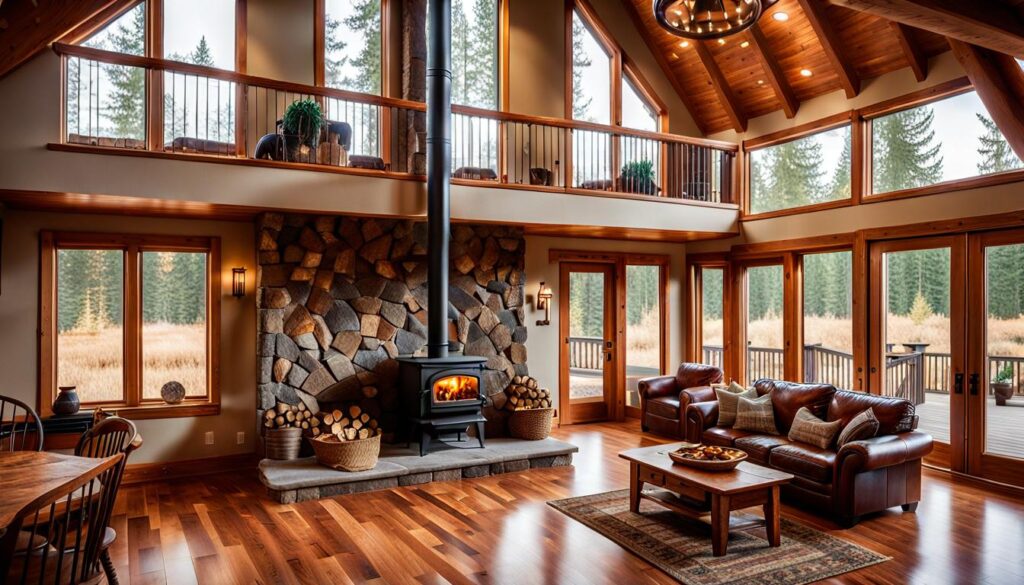
Poorly Insulated Older Home
An older 1,200 square foot home with poor insulation and drafty windows may require a larger stove than its square footage suggests. In this case, a large wood stove with an output of 80,000-100,000 BTUs or 14-18 kW might be necessary to compensate for heat loss.
Super-Insulated Modern Home
Conversely, a well-insulated, energy-efficient modern home of 1,500 square feet might only need a medium-sized wood stove with an output of 40,000-60,000 BTUs or 7-10 kW due to its superior heat retention properties.When selecting a wood stove, it’s crucial to consider factors beyond just square footage, such as:
- Ceiling height
- Insulation quality
- Window size and quantity
- Climate zone
- Desired temperature
Always consult with a professional installer to determine the ideal stove size for your specific space and heating needs. They can provide expert guidance based on your unique requirements and local regulations.
Choosing the Right Fuel Type
Wood stoves come in various fuel options, each with its own advantages:
- Wood-Only Stoves: Ideal for those with access to seasoned firewood and a preference for traditional heating methods.
- Multi-Fuel Stoves: Offer flexibility to burn both wood and smokeless coal.
- Pellet Stoves: Utilize compressed sawdust pellets for a more automated heating experience.
When selecting fuel, opt for kiln-dried wood or wood with a moisture content below 20% to ensure efficient burning and minimal smoke production
The Importance of Ecodesign Ready Stoves
As environmental concerns grow, choosing an Ecodesign Ready stove becomes increasingly important. These stoves are designed to meet stringent emission standards, significantly reducing the impact on air quality compared to older models or open fires.
Installation Considerations
Proper installation is crucial for the safe and efficient operation of your wood stove. Consider the following:
- Chimney Compatibility: Ensure your chimney is suitable for a wood stove installation.
- Clearance Requirements: Maintain proper distances from combustible materials.
- Hearth Protection: Install appropriate floor protection to prevent heat damage.
Always consult with a HETAS-approved professional for expert advice and installation services
Maximizing Efficiency and Minimizing Emissions
To get the most out of your wood stove while minimizing environmental impact:
- Use only high-quality, seasoned hardwoods like oak, ash, or beech.
- Employ the top-down lighting technique for cleaner burns.
- Maintain proper combustion temperatures.
- Refuel only when the previous load has burned down to embers.
- Schedule annual chimney sweeps and stove inspections
Wrapping Up: Selecting the Right Wood Stove for Your Room Size
Selecting the right wood stove for your room size is a balance of science and personal preference. By considering your space’s unique characteristics, understanding stove sizing principles, and factoring in efficiency and environmental concerns, you can choose a wood stove that will provide years of comfortable, cost-effective heating. Remember to consult with professionals and adhere to local regulations to ensure a safe and satisfying wood stove experience.
As you embark on your wood stove selection journey, keep in mind that the perfect stove will not only heat your home efficiently but also become a cherished focal point, bringing warmth and ambiance to your living space for years to come.

